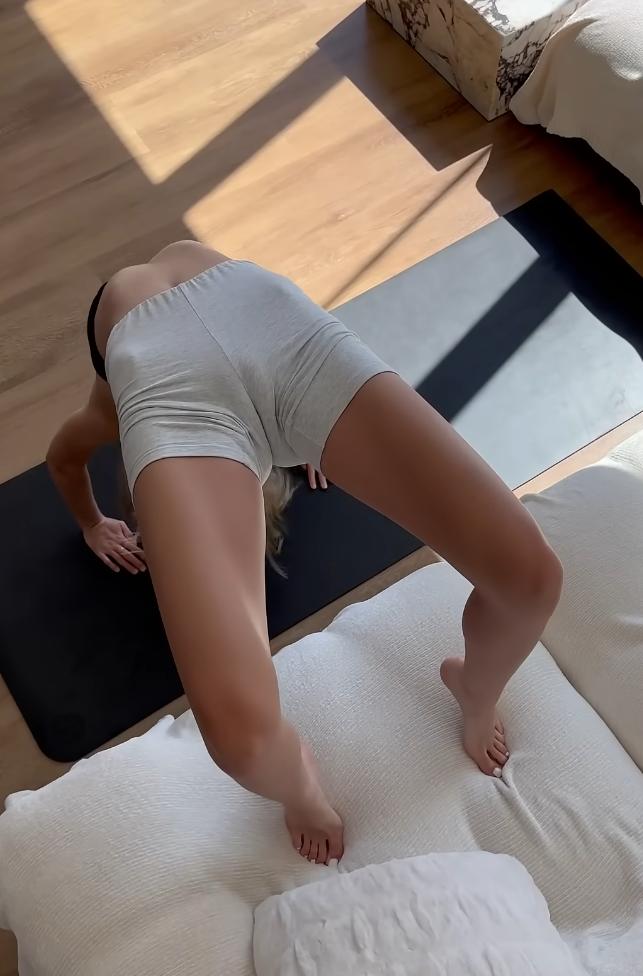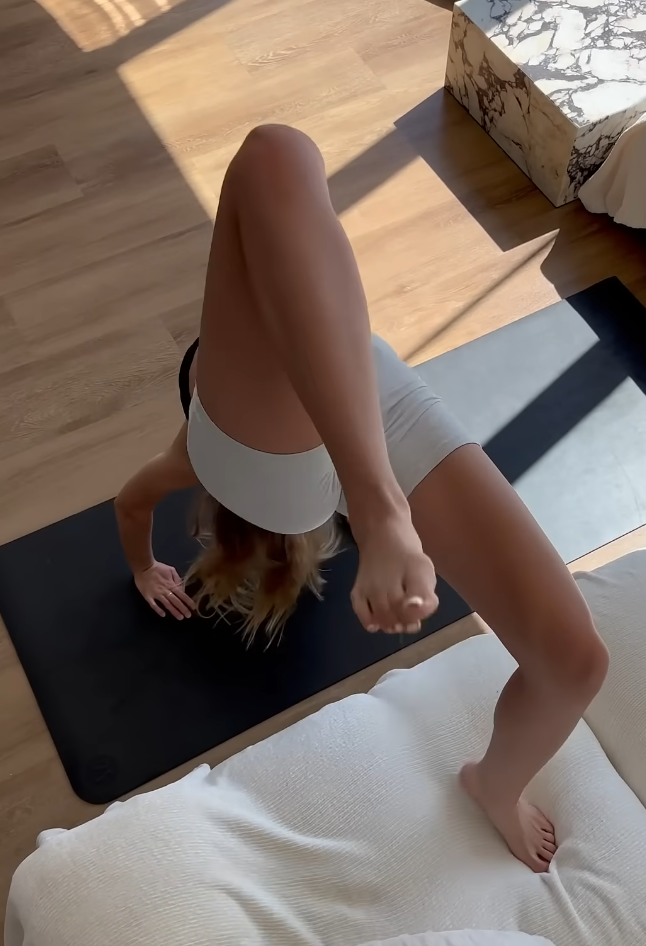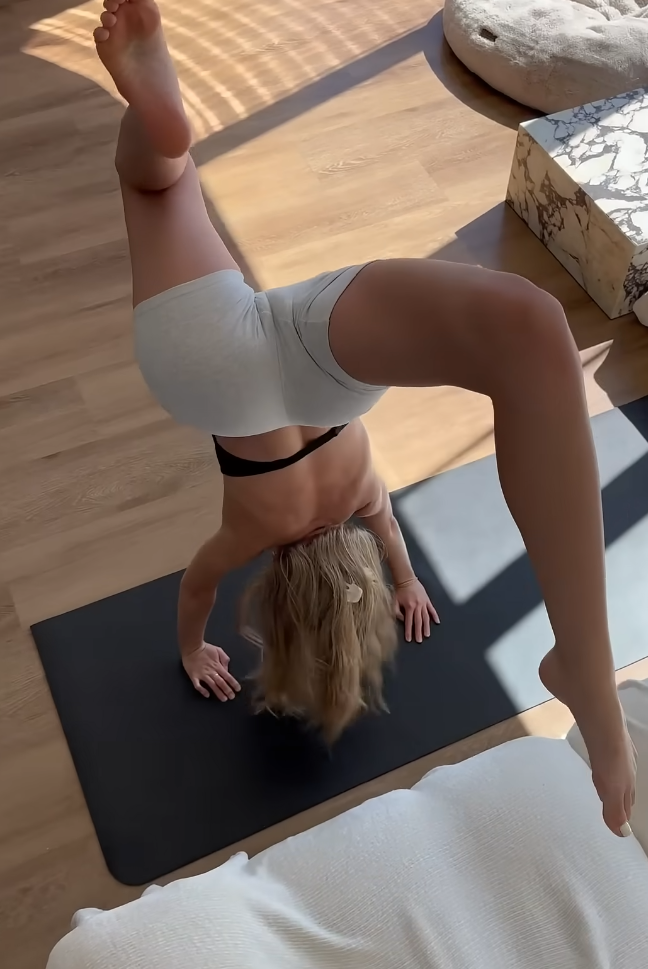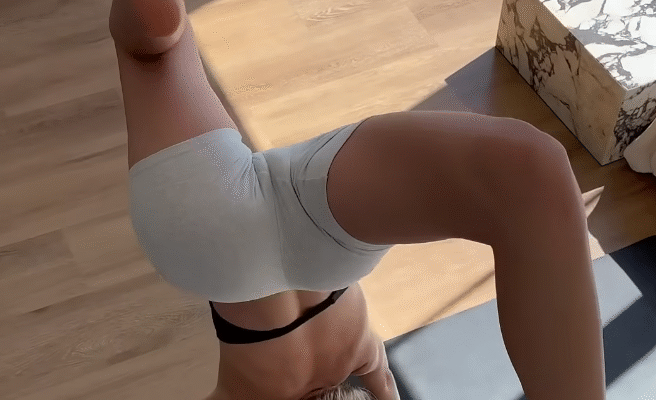In the world of yoga and movement, certain transitions stand out for their elegance, strength, and beauty. One such awe-inspiring transition is the handstand flip into bridge pose — a seamless flow that combines balance, power, and deep flexibility. It’s not just a show of physical prowess, but also a demonstration of mental focus, trust, and the deep connection between breath and body.
This sequence — handstand to flip to bridge — might look like something straight out of a gymnast’s routine, but in the yoga community, it represents an advanced yet graceful evolution of practice. Whether you’re a seasoned yogi or simply curious about what the body is capable of, the handstand flip into bridge pose is a beautiful expression of freedom and flow.

Breaking It Down: What Is the Handstand Flip to Bridge Pose?
At its core, this sequence involves moving from a handstand (Adho Mukha Vrksasana) into a controlled backbend, landing in a bridge or upward-facing bow (Urdhva Dhanurasana). It’s a dynamic inversion and backbend combo that requires:
- Core strength to stabilize in the handstand
- Shoulder and wrist strength to bear weight in inversion
- Spinal flexibility for a smooth transition into the backbend
- Hip openness and control to guide the legs over and down safely
- Courage and trust in your body and the ground beneath you
Done correctly, it’s a powerful heart-opener and a full-body energizer.

Step 1: Building a Strong Handstand Foundation
Before you even think about flipping out of your handstand, it’s crucial to have a solid handstand practice. In yoga, the handstand isn’t just a pose — it’s a journey. Here’s how to build up to it:
- Practice wall-supported handstands: Use the wall to build strength and muscle memory. Focus on keeping your body straight, with shoulders stacked over wrists.
- Strengthen your wrists and shoulders: Daily drills like downward dog push-ups, plank holds, and wrist warmups help prepare the joints.
- Engage the core: Strong abdominals are essential. Exercises like hollow body holds and boat pose will help you stabilize in the air.
- Breathwork: Inversions can bring up fear. Deep, steady breathing calms the nervous system and brings focus.

Once you’re confident kicking into a handstand and holding for at least a few seconds — even if it’s against the wall — you’re ready to explore more.
Step 2: Understanding the Flip — Control Before Flight
Now comes the fun part: the flip. But let’s be clear — this is not a reckless backflip or a dramatic tumble. It’s a controlled descent, initiated from your handstand with awareness, breath, and slow momentum.
To prepare for the flip:

Train with a spotter or practice in a soft, safe environment like grass or a gym mat.
Practice backbend strength: Bridge pose, wheel pose, and camel pose are essential here. The stronger and more open your back and shoulders, the smoother your landing.
Play with shifting your gaze: In a stable handstand, start slowly looking toward the horizon or behind you. This head shift is a subtle cue to begin the flip motion.
Bend one leg: From your handstand, start by bending one knee and reaching the foot back behind you. Let it guide the movement into the arching descent.
Commit with control: The trick is not to fling your legs but to arch and open your chest, letting gravity assist as your legs gently drop back into bridge pose.
Step 3: Landing in Bridge Pose (Urdhva Dhanurasana)
The end of the flip is the beginning of a deep backbend. The hands stay grounded, the chest opens, and the feet land behind you — completing the bridge.
Key tips for a safe and strong landing:
- Feet hip-width apart: Try to land with feet under the knees to protect the lower back.
- Press into your hands: Keep your arms strong and extended, lifting through the chest.
- Engage your glutes: This helps stabilize the pelvis and avoid compression in the lower back.
- Breathe deeply: This is a heart-opening pose — let your breath fill the chest and soften the shoulders.
Once landed, you can either hold the bridge pose, flow into wheel, or gently release down to the mat for rest.
Benefits of Practicing This Transition
Besides looking incredibly cool, this handstand flip into bridge pose offers real physical and mental benefits:
- Builds upper body and core strength
- Increases spinal flexibility and back strength
- Improves body awareness and coordination
- Teaches control, patience, and mental focus
- Boosts confidence and courage in your practice
- Stimulates the nervous system, energizing the entire body
It’s also a beautiful metaphor for life: sometimes, you have to go upside down, trust the process, open your heart, and land gracefully into the unknown.
Precautions and Contraindications
As empowering as this move is, it’s not for everyone — and that’s okay. Always listen to your body and consult a teacher or physical therapist if you have:
- Wrist, shoulder, or neck injuries
- Spinal conditions or limited back flexibility
- Vertigo, high blood pressure, or glaucoma
- Fear or anxiety around falling (which is very common and valid)
You can still practice elements of this transition — like handstands against a wall or supported bridges — to build toward the full flip safely.
Bringing It All Together in a Yoga Flow
Want to incorporate this movement into your yoga sequence? Try something like this:
- Warm-Up: Sun salutations, cat-cow, plank holds, shoulder openers
- Inversion Practice: Handstand drills, dolphin pose, kicking up
- Backbending Sequence: Cobra, upward dog, camel, wheel
- The Flip: Handstand into controlled descent to bridge
- Cool Down: Supine twists, happy baby, savasana
Don’t rush it. The transition is as beautiful as the destination. Flow slowly, breathe deeply, and respect the process.
Final Thoughts: Yoga as a Playground
Yoga doesn’t always have to be still, quiet, or traditional. Sometimes it’s about flying, flipping, and having fun with your body. The handstand flip into bridge is a celebration of strength, flexibility, and creativity.
If you’re just starting your yoga journey, don’t be discouraged by advanced poses. Every master was once a beginner. Take it one breath, one pose, one wobble at a time. And when you’re ready — maybe with the help of a teacher or a friend — you’ll flip, fly, and land right where you’re meant to be.
Let me know if you want a shorter version, visuals, or a yoga sequence built around this pose!



